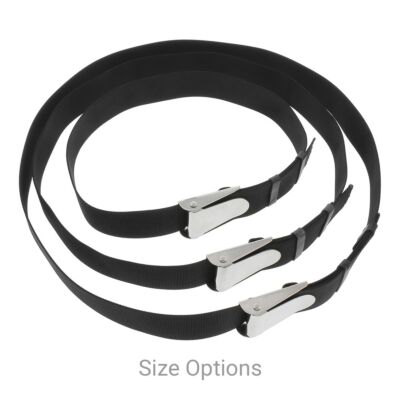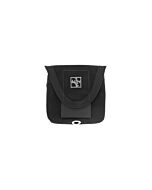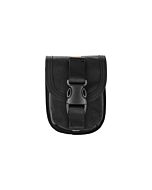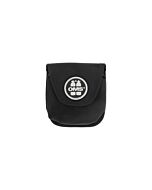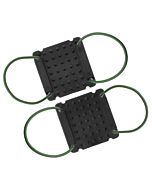DGX Custom - Nylon Webbing Weight Belt
- DGX marine grade 316 stainless steel QR buckle with riveted pin hinge in three slot design
- DGX marine grade { 2 in | 5 cm } nylon webbing is rot-proof, waterproof, and resistant to mold, mildew, UV
- Webbing bitter end is hot-knife cut with the corners rounded for ease of use
- Extra webbing behind divers left side of the buckle will provide up to {5 in | 12 cm} of additional length
- Includes two EPDM elastic belt loops to secure excess webbing and/or the tang
DGX Custom - Nylon Webbing Weight Belt
† Finished length is measured from end to end including the woven buckle. Extra webbing behind divers left side of the buckle will provide up to {5 in | 12 cm} of additional length.
Many experienced sport divers have deprecated their ditchable weight belt in favor of a BC integrated weight system, and quick-release belts are almost never seen in technical diving configurations where loss of weight in an overhead environment could be deadly. However needs vary, so this is a classic SCUBA diving nylon webbing weight belt with quick-release stainless steel riveted pin hinge three-slot buckle plus two EPDM belt loops. Our nylon webbing is rot-proof, waterproof, and resistant to mold, mildew and UV. The EPDM elastic belt loops can be used to secure the ends of the webbing threaded through the buckle from hanging loose (snagging the bitter end excess is the most common cause of inadvertently pulling the quick-release open.) Our heavy-duty buckle provides a closure detent but if you wish to further secure the release, you can slide one of the EPDM elastic loops over the end of the tang to hold it down.
Block lead weights are commonly threaded on the belt webbing and can be held in place with (optional) serrated belt slides (aka keepers) to keep the blocks from sliding along the length of the webbing. However, a great alternative for travel is mounting two or four utility-trim weight pockets on the webbing then either soft weights or block weights can be placed in the pockets. Changing block lead weight usually means unthreading and rethreading all the blocks, but a quick mount alternative for block weights is the Highland Weight Plate System.
If you wish to shorten the belt, resist the temptation to cut the webbing from the bitter end. Instead position the buckle at the desired length to shorten the belt by simply creating a longer tail behind the divers left side of the buckle. Fold the excess if need be, then tuck the tail under the rear of one the belt loops to make it tidy. Take the shorter length on a dive or two and only when certain the length is appropriate then trim the excess from the tail end if desired, but we recommend leaving a tail of at least {6 in | 15 cm} or more to allow for future "expansion" needs. Regardless, the tail should never be trimmed to less than {1 in | 3 cm} to ensure the buckle remains securely threaded on the webbing. Seal the end of the freshly cut webbing with the flame from a lighter.
| Brand | DGX |
|---|---|
| SKU | DX-201020WB |
| Weight | 1.000000 |
Customer Reviews
 WARNING
WARNING
Inadvertently dropping a weight belt can be catastrophic - on land causing a foot injury or in water causing a loss of buoyancy control.
- Avoid buckle designs without a riveted pin hinge; in our opinion they are not reliable enough for this mission critical application.
- Check that a two-slot buckle is properly woven on to the webbing; over the years we've seen a lot of two-slot buckles improperly woven thus allowing the webbing and buckle to separate.
- Avoid the inexpensive plastic buckles that rely on teeth molded in to the tang to provide closure; with wear they can allow dry webbing to slip out of the closed buckle.
- Most plastic buckles are also easily damaged if a block weight is dropped directly on them; the damage is not always apparent until the buckle later fails.
- Regardless of the buckle, the most dangerous weight belt of all is the one with an excess amount of weight.
Threading a 3-Slot Quick-Release Belt Buckle
For harness and weight belt applications, we recommend only using a three-slot metal buckle with a pinned hinge mechanism that is riveted. We also suggest using a design that has a positive detent on the closure. The webbing should be woven through all three slots and then back upon itself through the wider end slot.
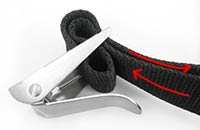
Starting from the front of the metal buckle, thread the left waist strap through the larger end slot of the buckle. If using the buckle on backplate harness, position the buckle approximately { 18 in | 45.7 cm } of webbing length from the plate left waist slot. Then thread the webbing from the back through the center slot and through the front of the inner most slot. Finally, thread the webbing through the back of the larger end slot so there are two thicknesses of webbing through one slot and pull the weave tight.
To easily use your buckle: lift the tang to 90° angle in relation to the base of the buckle, then touch the free end of the webbing to the tip of tang and slide the webbing down the tang and into the slot. Pull the webbing through the buckle and push down on the tang until you feel the detent engage for a secure closure.
